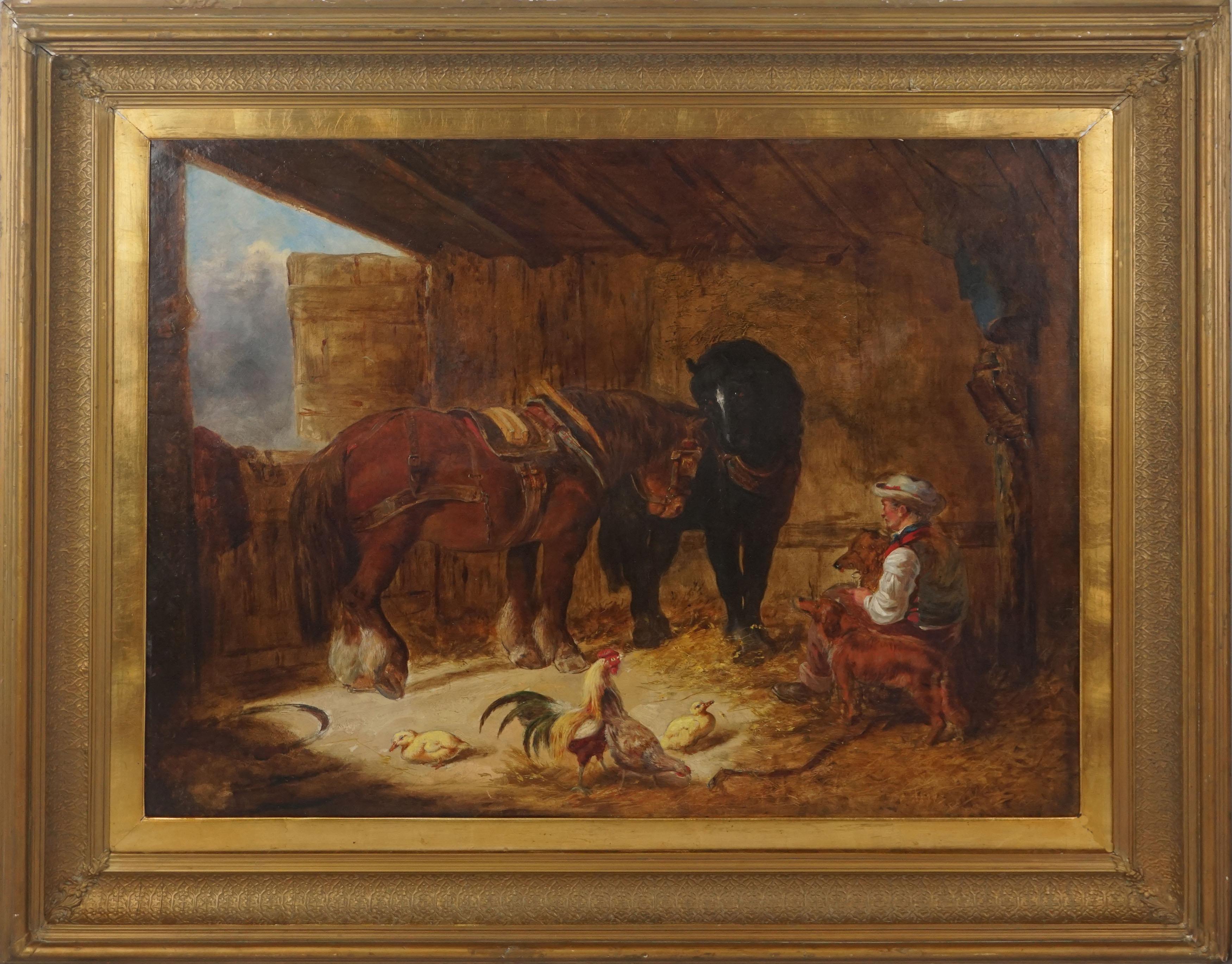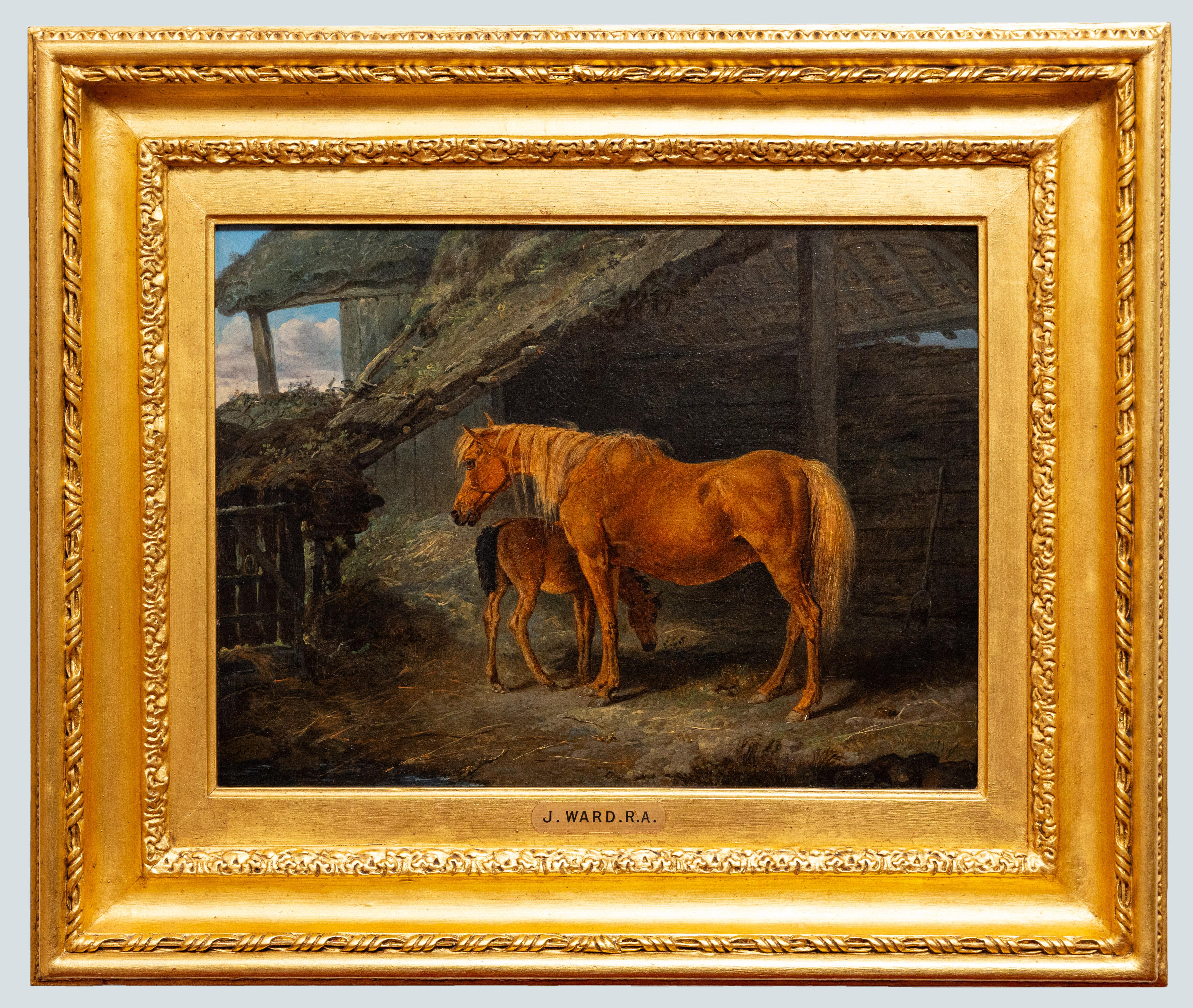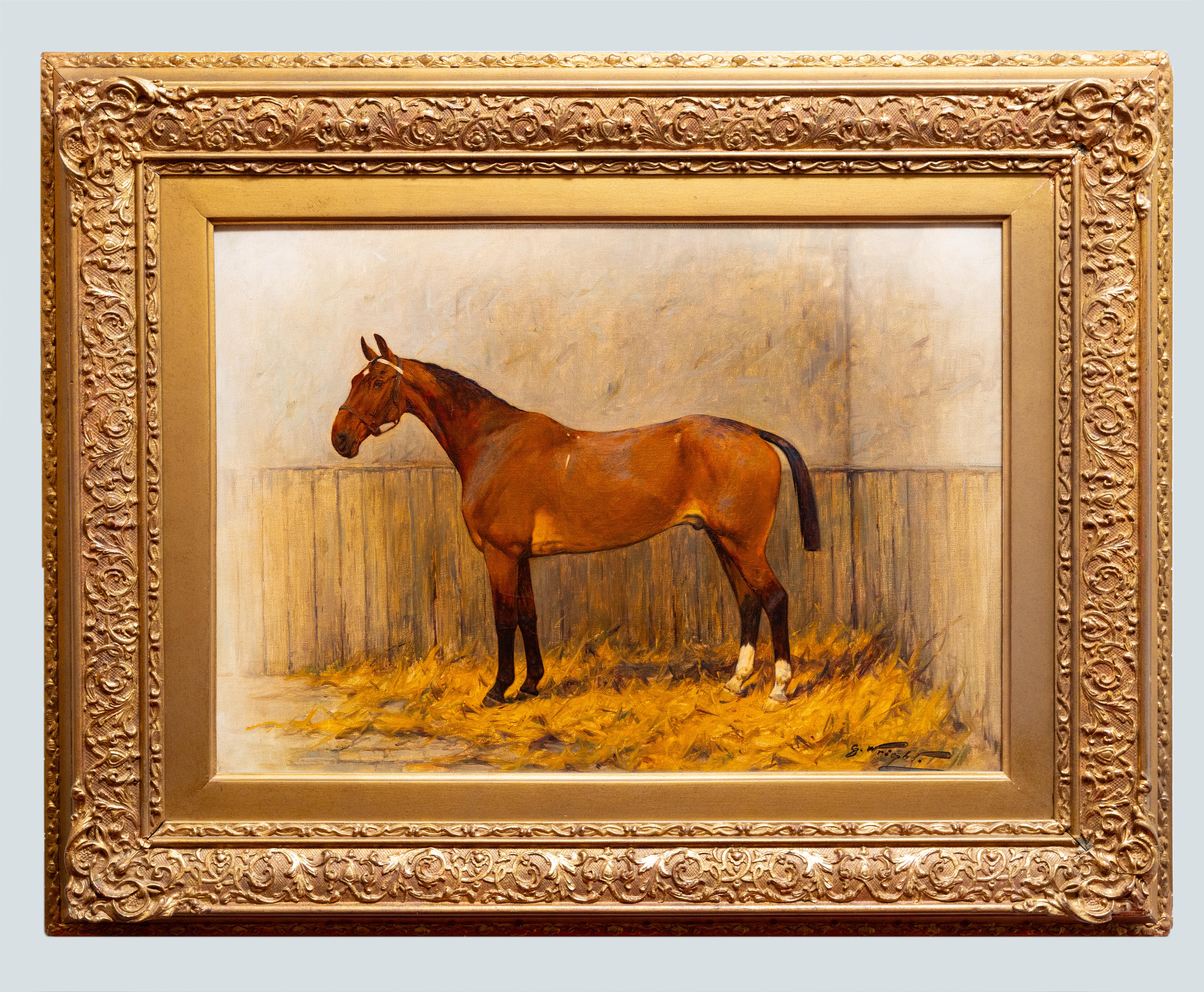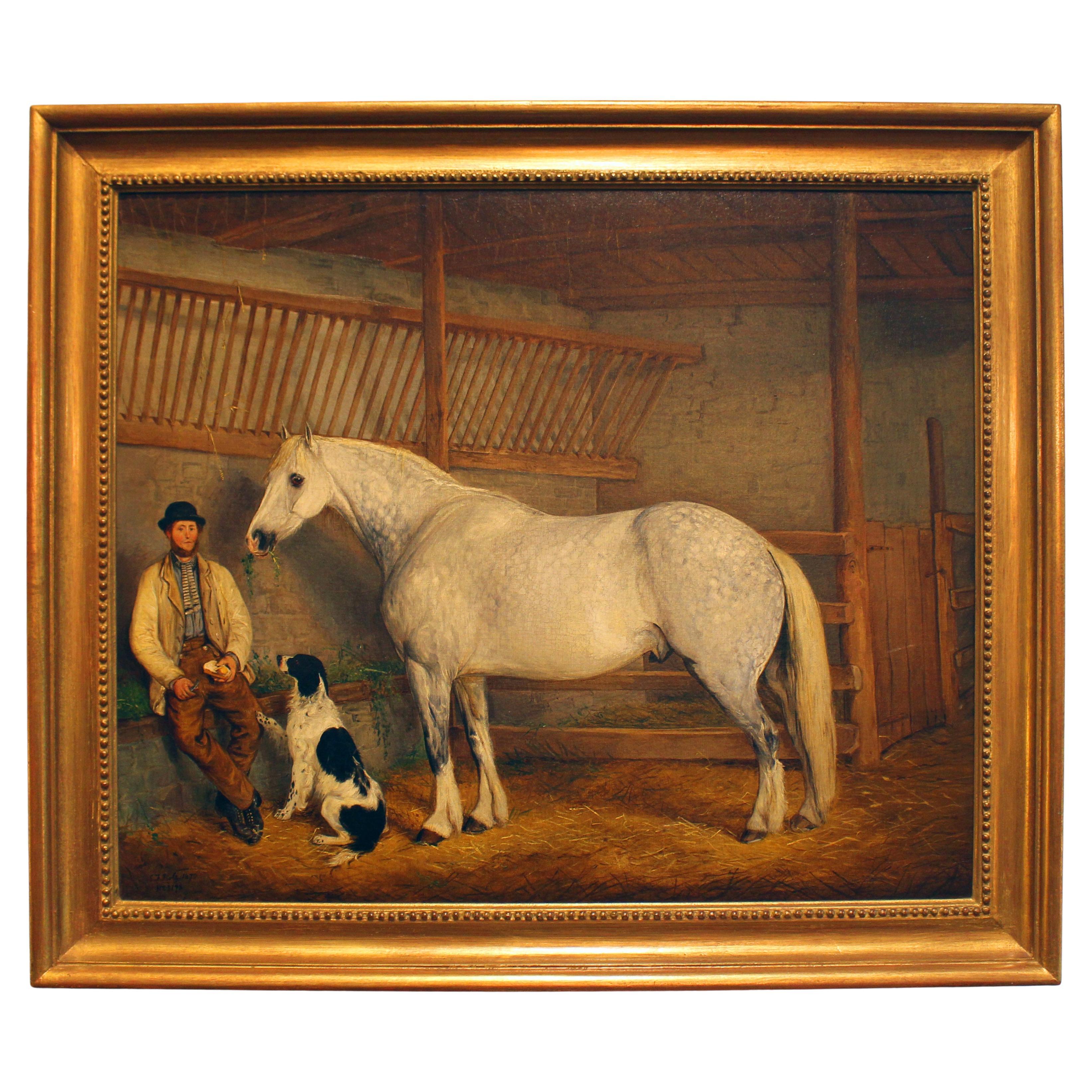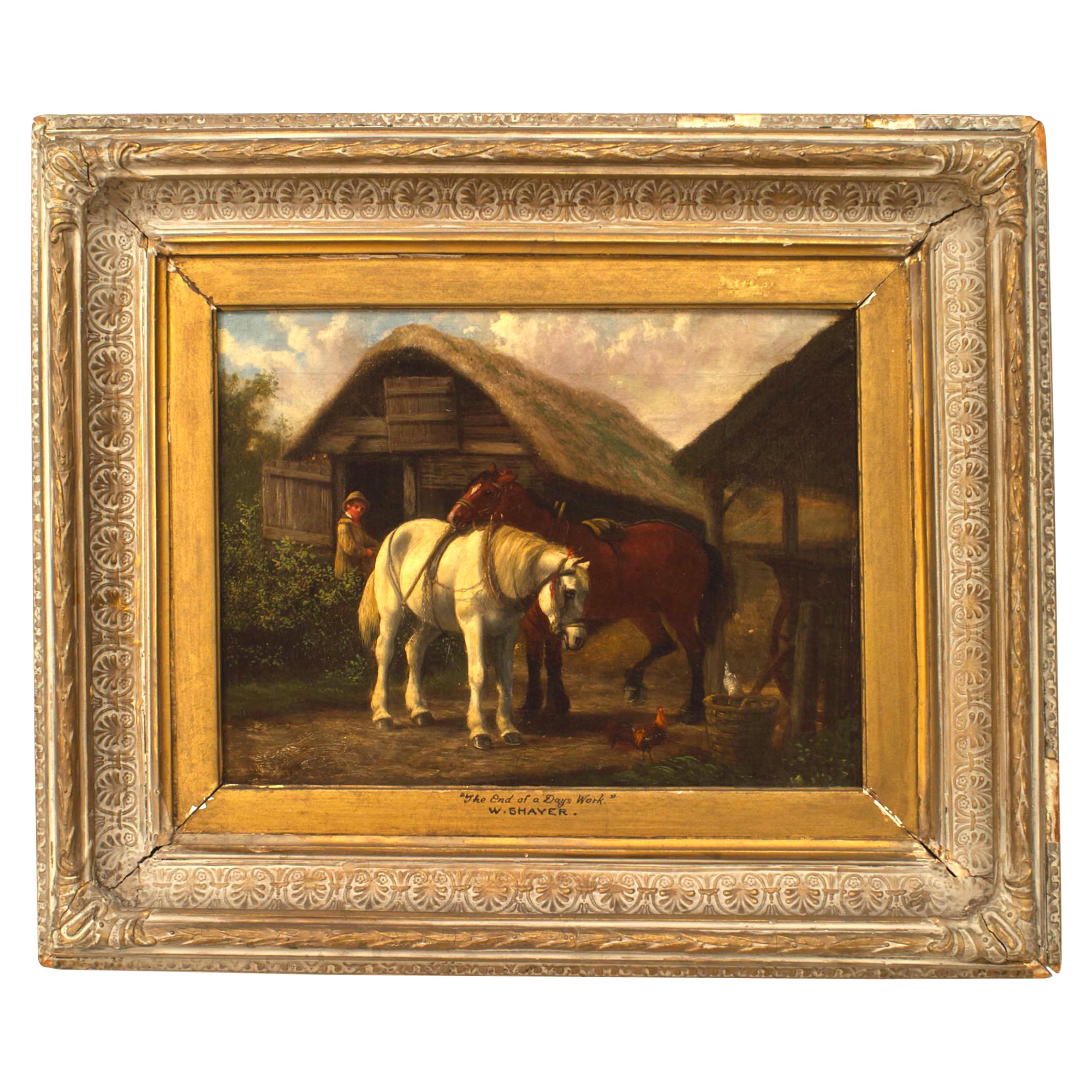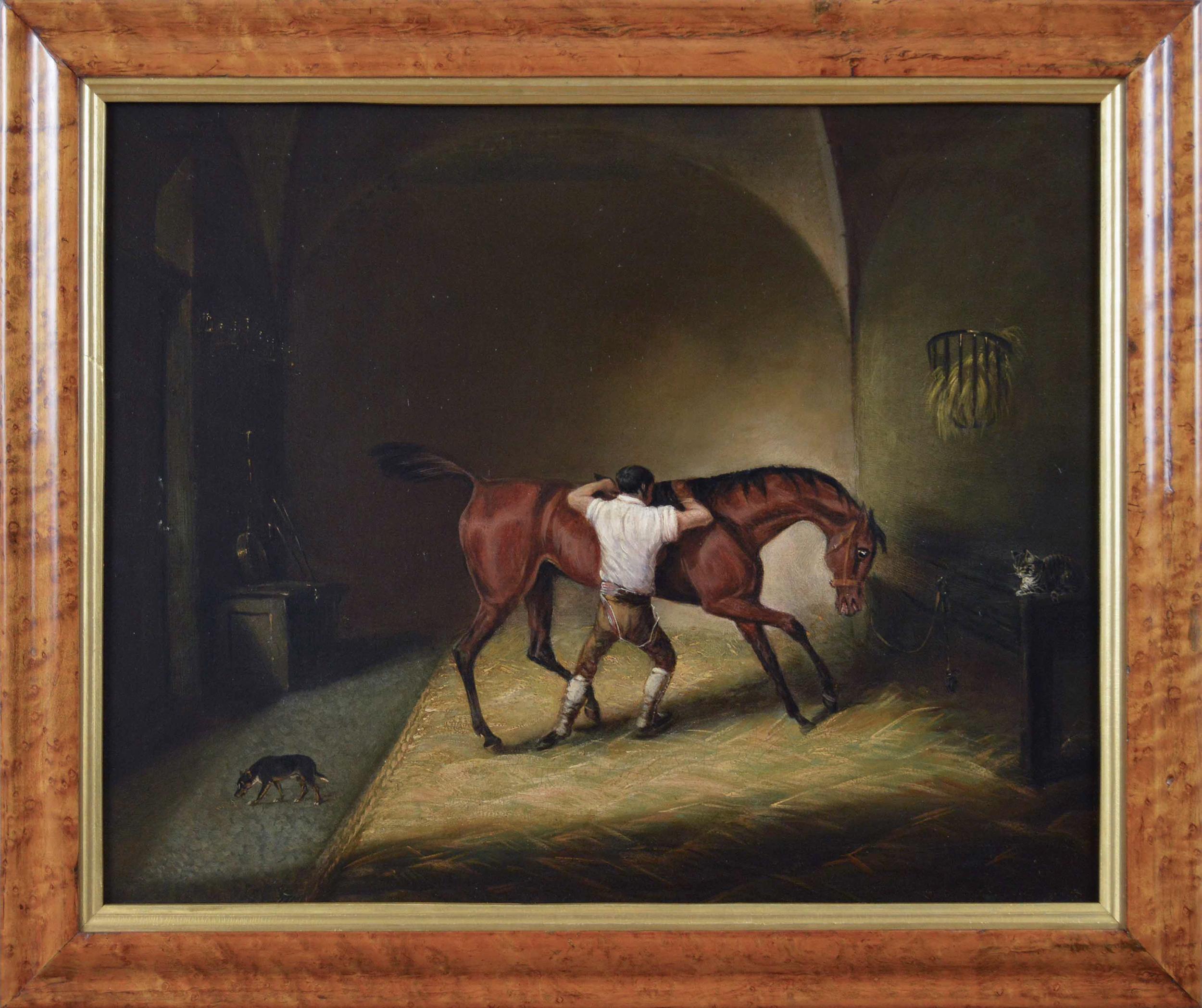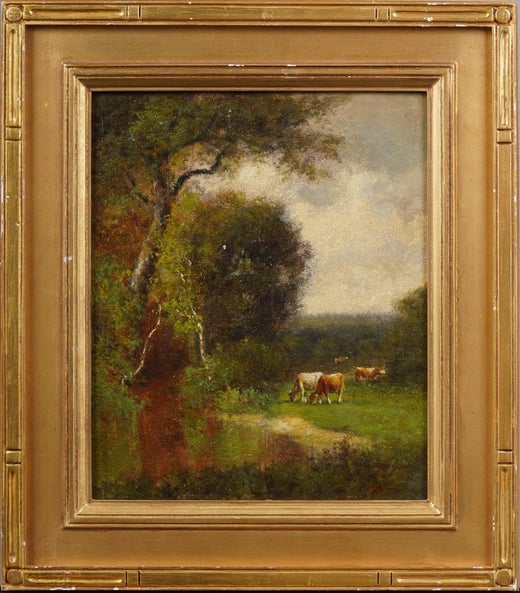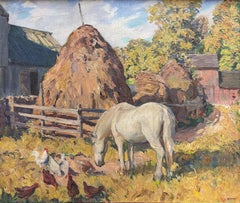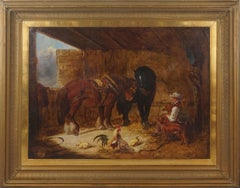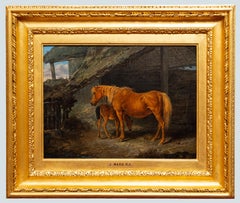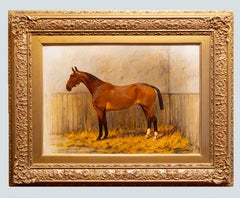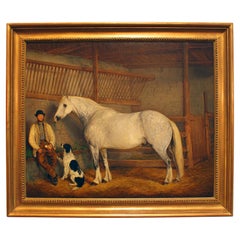Items Similar to "Interior of a Stable" William Hart, Hudson River School Antique, Boy and Horse
Want more images or videos?
Request additional images or videos from the seller
1 of 12
William Hart"Interior of a Stable" William Hart, Hudson River School Antique, Boy and Horse
$60,000
$75,00020% Off
£45,374.35
£56,717.9420% Off
€51,973.73
€64,967.1720% Off
CA$84,074.42
CA$105,093.0220% Off
A$91,780.97
A$114,726.2120% Off
CHF 48,323.83
CHF 60,404.7820% Off
MX$1,099,429.42
MX$1,374,286.7720% Off
NOK 618,043.93
NOK 772,554.9120% Off
SEK 564,284.38
SEK 705,355.4720% Off
DKK 388,255.86
DKK 485,319.8320% Off
About the Item
William M. Hart (1823 - 1894)
Interior of a Stable
Oil on canvas
17 x 12 inches
Provenance
William Macbeth Gallery, New York
Mrs. Mabel Brady Garvan Collection
Christie's New York, Sporting Art, November 28, 1995, Lot 116
Ann Carter Stonesifer, Maryland
Estate of above
Brunk Auctions, Asheville, North Carolina, January 27 2018, Lot 777
Exhibited
New York, The Metropolitan Museum of Art, Life in America, April 24 - October 29, 1939, no. 123, illustrated.
New York, Macbeth Gallery, 1892: Sixtieth Anniversary Exhibition, April 1952, p. 5, no. 18.
Literature
Turner Reuter Jr, Animal and Sporting Artists in America, Middleburg, Virginia, 2008, p. 306.
Gary Stiles, William Hart: Catalogue Raisonné and Artistic Biography, no. 1126, illustrated.
It should be noted that the Francis Patrick Garvan and Mrs. Mabel Brady Garvan collection, of which this painting was a part of, was one of the foremost American Art collections and now makes up a large part of the Smithsonian American Art Museum and the Yale University Art Gallery collections.
Born in 1823 in Paisley, Scotland, William Hart emigrated with his parents to the United States at the age of nine and settled in Albany, New York. It was here that Hart first began his artistic training when he was placed under the tutelage of Messrs, Eaton & Gilbert, the prestigious coach-makers from Troy, New York. During this time, Hart learned how to decorate coach panels, covering them with either landscapes or figurative compositions. At the age of seventeen, he was eagerly contemplating an artist’s profession. Consequently, he left the mechanical trade of coach-making and began expanding his artistic pursuits to more refined endeavors.
Hart followed coach-making with decorating window shades and later developed an interest in portraiture. Around 1840, he established his first formal studio in his father’s woodshed in Troy. There, he created many likenesses of individuals, affording him a nominal income. Once, he remarked that he felt prouder over his first fee of five dollars for painting a head then for the larger sums he would command later in his career. Nevertheless, his wages from portraits during this early period proved insufficient. Thus, he expanded into landscape painting, allowing him to barter his works or sell them for modest prices.
In 1842, Hart moved to Michigan in an attempt to further his success; portraiture remained his primary means of support. Unfortunately, his experiences in the West were disappointing. Hart spent three years living a rough existence until he finally returned to Albany in 1845. Upon his return, he fully devoted himself to the art of landscape painting. Despite his failing health, he worked diligently to perfect his skill until 1849 when he traveled abroad to his native land of Scotland. This trip was made possible through the generosity of his patron and advisor, Dr. Ormsby of Albany. For three years, he studied in the open-air, creating brilliant sketches of the Scottish Highlands and the surrounding British Isles.
Returning to Albany once more in 1852, Hart enjoyed improved health and was reinvigorated with purpose. The following year, he moved to New York and opened a studio, promoting himself as a specialist in landscape painting. Hart became a regular contributor to the National Academy of Design. His works received a great deal of attention from artists and connoisseurs alike, all of whom praised him for his fresh, self-taught style. In 1855, he was designated as an associate of the National Academy of Design; three years later he was elected to Academician. In 1865, he was unanimously chosen to be the first president of the Brooklyn Academy of Design. It was during his tenure there that he delivered his famous lecture The Field and Easel, which emphasized the distinguishing principles of landscape art in America. Hart argued that landscape painters should express the “look of the place” being depicted.Critics during the 1870s noted his sensitive balance between capturing a strict “real” interpretation of nature and that of a more “ideal” sentimental tone. For instance, in 1869, Putnam Magazine noted that Hart brought back “exquisite studies” of the surrounding Tappan Zee area that were both well executed and full of artistry.
In the 1870s and ’80s, Hart continued to receive much public attention. Earl Shinn noted in an 1876 review of Hart’s work his distinct use of color, stating: "He loves to struggle with one of the most difficult feats of landscape-painting, the dazzling tints of our forests in autumn. His pictures of those mounds of leafy bloom which the Adirondacks yield in November are veritable bouquets of florid color."
Consequently, Hart’s landscapes graced both auction houses and many of the largest collections during the latter half of the 19th century. Furthermore, Hart’s demand during this period is evidenced in the many engravings of his paintings for gift books and art journals, including 13 works which were featured in Picturesque America, the most popular of such publications of the 1870s.
- Creator:William Hart (1823 - 1894)
- Dimensions:Height: 28.5 in (72.39 cm)Width: 23.5 in (59.69 cm)
- Medium:
- Movement & Style:
- Period:
- Condition:Wax and linen lined, scattered inpaint.
- Gallery Location:New York, NY
- Reference Number:1stDibs: LU184129904192
William Hart
Born in Scotland, William Hart emigrated with his family to New York on the ship Camillus in 1830. He became known for serene, bucolic and romantic landscapes. Many of his paintings had cattle and realistic figures diminished in the landscape, a motif he began in the late 1880s. Hart was a second generation "Hudson River School" painter. George Inness and Asher Durand were major influences, although he was basically self-taught.
About the Seller
5.0
Platinum Seller
Premium sellers with a 4.7+ rating and 24-hour response times
Established in 2022
1stDibs seller since 2022
133 sales on 1stDibs
Typical response time: <1 hour
- ShippingRetrieving quote...Shipping from: New York, NY
- Return Policy
More From This Seller
View All"A Quiet Afternoon" Enoch Wood Perry, Genre Scene Mother and Child Interior
By Enoch Wood Perry Jr.
Located in New York, NY
Enoch Wood Perry, Jr. (1831 - 1915)
A Quiet Afternoon, 1876
Oil on canvas
15 1/4 x 21 inches
Signed and dated lower right
Born in 1831 in Boston, Enoch Wood Perry, Jr, is internati...
Category
1870s Hudson River School Interior Paintings
Materials
Canvas, Oil
"White Horse" Frederick Lester Sexton, Bucolic Barn, Farm Scene, White Horse
By Frederick Lester Sexton
Located in New York, NY
Frederick Lester Sexton
White Horse
Signed lower right
Oil on canvas
25 x 30 inches
Provenance
Part of a Collection received from the Lyme Art Association.
Frederick Lester Sexton received a lot of reviews and exhibitions in the 1920s, 1930s, and 1940s, when he was at the height of his career. Because it captured the personal view of many people's wish to ignore national issues and simply live their lives in their homes, his work was favorably welcomed. The rise of modernist styles like Abstract Expressionism, which started to take over the American art scene in the 1950s, also contributed to Sexton's fall in popularity. As collectors and regular spectators discover once more that realism is a valid component of American art because it speaks directly and clearly to the beauty they perceive in their surroundings, many artists, like Sexton, are experiencing a renaissance.
Cheshire, Connecticut, was the birthplace of Frederick Sexton in 1889. His father, J. Frederick Sexton, was the Rector of St. Peter's Church in Cheshire and a well-known Episcopal clergyman. The mother, Mary Louise Lester, was an amateur painter and came from a pretty well-known Hartford family. Frederick was killed in an open-hearth fire when he was eighteen months old. His right hand was badly burned and was never to be opened again. The father kept the family together after his mother passed away when he was nineteen.
Sexton's mother taught him art, and he went to public schools in New Haven. He received the prestigious Winchester Prize for a year of study in Spain while attending the Yale School of Fine Art, where he studied under Augustus Tack...
Category
1930s American Impressionist Figurative Paintings
Materials
Canvas, Oil
Rapelyea House, New York, William Rickarby Miller, Hudson River School Landscape
By William Rickarby Miller
Located in New York, NY
William Rickarby Miller
Rapelyea House, New York, 1884
Signed and dated lower left
Oil on canvas
20 x 30 inches
Provenance:
Kennedy Galleries, New York
Born in Staindrop, County Durham, England, he was a portrait and landscape painter, especially appreciated for watercolor painting, which he sold through the American Art Union...
Category
1880s Hudson River School Landscape Paintings
Materials
Canvas, Oil
"Couple in the Field, " James Brade Sword, Hunter on Farm Landscape
By James Brade Sword
Located in New York, NY
James Brade Sword (1839 - 1915)
Couple in the Field
Oil on canvas
16 x 20 inches
Signed lower left
After a childhood in Macao, China, James Brade Sword started out in life, after hi...
Category
Late 19th Century Hudson River School Landscape Paintings
Materials
Canvas, Oil
"Pastoral Landscape, " William Hart, Hudson River School, Cloudy View with Cows
By William Hart
Located in New York, NY
William Hart (1823 - 1894)
Pastoral Landscape, 1877
Oil on canvas
9 1/2 x 14 1/2 inches
Signed and dated lower left
Born in Paisley, Scotland, William Ha...
Category
1870s Hudson River School Landscape Paintings
Materials
Canvas, Oil
"Lady in a Interior" Addison Thomas Millar, 19th Century American Genre Painting
By Addison Thomas Millar
Located in New York, NY
Addison Thomas Millar
Lady in a Interior
Oil on canvas board
14 x 10 inches
Millar's father emigrated to the United States from Scotland in 1845. He grew up in Warren, Ohio. During his primary education, he took some painting lessons from John Bell, a local landscape painter.
In his late teens, he won three consecutive awards from The Youth's Companion, in their annual art contests. This prompted his parents to allow him to go to Cincinnati to take formal lessons from the genre painter, De Scott...
Category
19th Century American Impressionist Figurative Paintings
Materials
Canvas, Oil, Board
You May Also Like
Mid 19th Century Interior of Stable with Horses, Dogs, and Stable Hand
Located in Soquel, CA
Wonderful mid 19th Century painting of a stable's interior with two horses, stable hand, two spaniels, a rooster and ducks from a follower of John Frederick Herring, Sr. (British, 17...
Category
19th Century English School Animal Paintings
Materials
Masonite, Oil, Linen
$7,600 Sale Price
20% Off
Mare and Foal in a Stable Interior, James Ward RA (1769 - 1859)
By James Ward
Located in GB
James Ward, an 18th-century English artist, captures a serene and intimate scene in his oil painting Mare and Foal in a Stable Interior. This work embodies Ward's expertise in portra...
Category
18th Century Animal Paintings
Materials
Canvas, Oil
$6,603 Sale Price
20% Off
A hunter in a stable interior, by George Wright (30 June 1860 - 11 March 1944)
By George Wright
Located in GB
George Wright (1860–1944) was a British painter renowned for his equestrian art, particularly hunting and coaching scenes. Born in Leeds, England, he was the eldest of seven children...
Category
Early 20th Century Animal Paintings
Materials
Canvas, Oil
1870 "A Stable Interior" Oil Painting by Edwin Frederik Holt
Located in Chapel Hill, NC
Signed & dated 1870 painting of "A Stable Interior" by Edwin Frederik Holt, English. Oil on canvas. Signed "E.F. Holt, 1870" lower left & "No 5196"; Holt, English, 1830-1912. A Dappl...
Category
Antique Late 19th Century English Victorian Paintings
Materials
Canvas, Paint
William Shayer Framed Oil Painting of Stable Scene
Located in Queens, NY
English Victorian (19th Cent) oil painting of a stable scene by William Shayer (1787-1879), signed, in a carved frame.
Category
Antique 19th Century British Victorian Paintings
Materials
Canvas
19th Century sporting animal oil painting of a horse & groom in a stable
By John Ferneley Junior
Located in Nr Broadway, Worcestershire
John Ferneley Jnr
British, (1815-1862)
Horse & Groom in a Stable
Oil on canvas, indistinctly signed
Image size: 18.75 inches x 23.25 inches
Size including frame: 23.5 inches x 28 inches
Provenance: The Parker Gallery, Berkeley St., London
A mid-19th century sporting painting of a horse and groom in a stable by John Ferneley Jnr. A stable hand is depicted in the middle of a stall grooming a bay horse. Nearby, a tabby cat can be seen resting on table whilst a small black and tan dog wanders by a door to the left.
John Ferneley Junior was born in 1815, at Melton Mowbray, the son of the sporting artist John E Ferneley (1782-1869) and his first wife Sarah. His brother Claude Lorraine Ferneley (1822-1892) and sister Sarah Ferneley...
Category
19th Century Victorian Animal Paintings
Materials
Canvas, Oil
More Ways To Browse
Antique Stable
Hudson River Oil Painting
Antique Coaches
Native American On A Horse
Hudson River Frame
19th Century Landscape Hudson River School Paintings
Antique Advisor
William Hart
Eaton Antique
Hart Oil Paintings
William Boyer
Boy Horse
Coach Panel
Tappan Zee
Horseshoe Crab
Monarch Butterfly Art
Original Painting Horse Fox Hunt
Ostrich Painting
